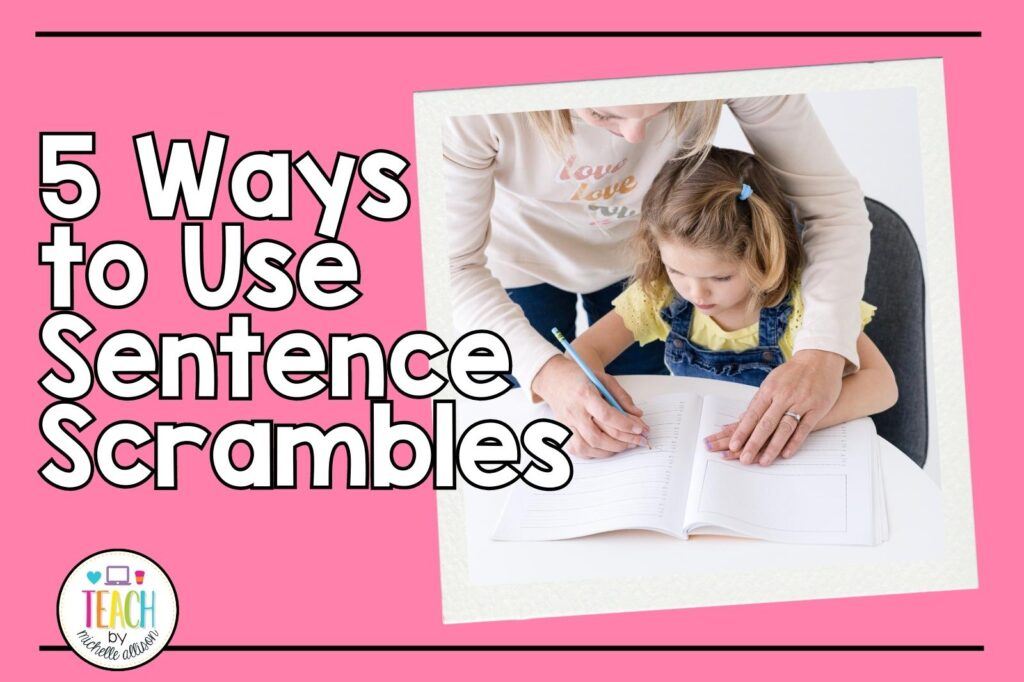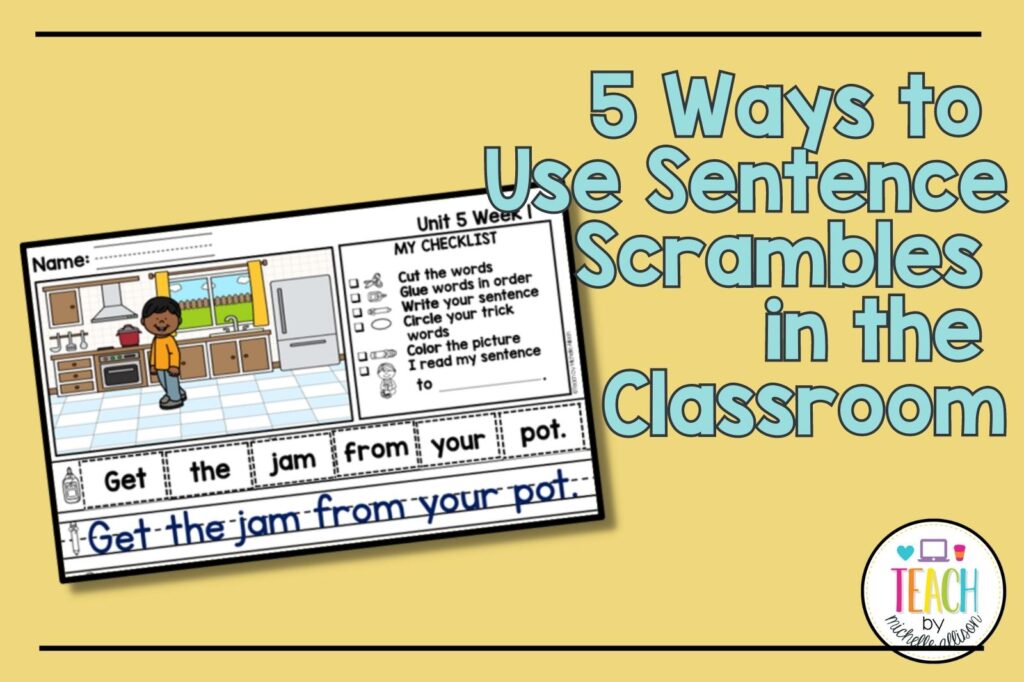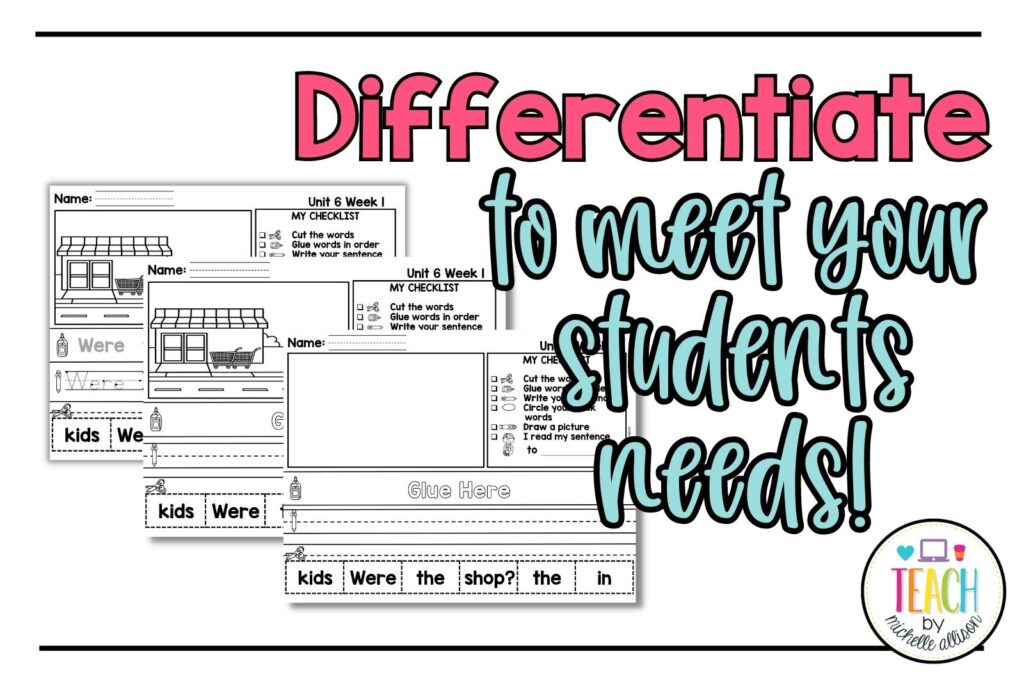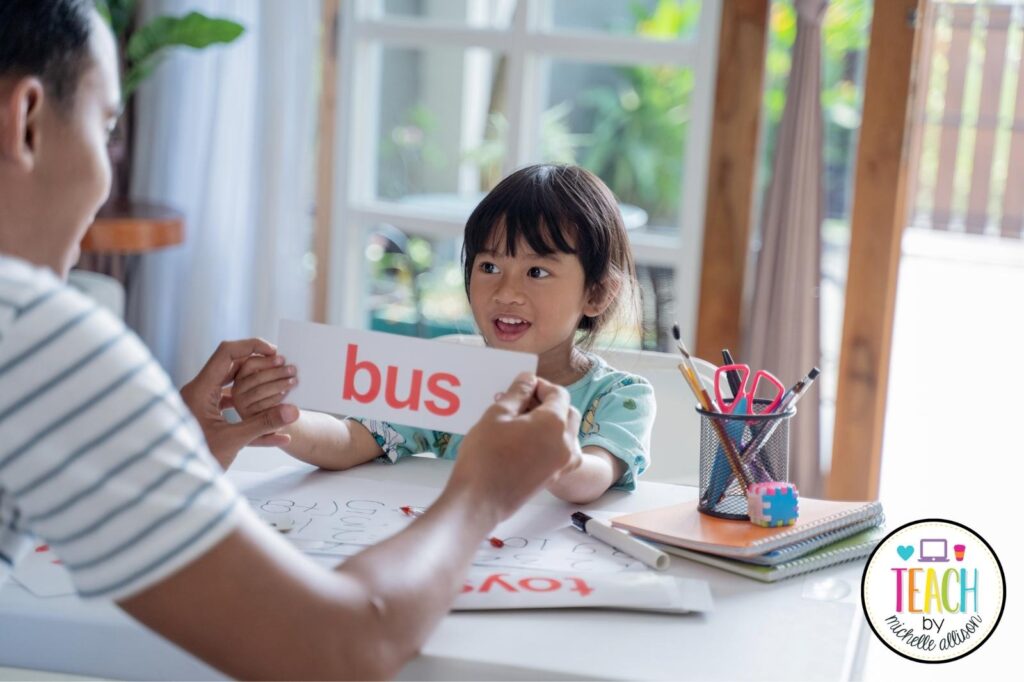
If you’re like me, you’re always on the lookout for activities that are both effective and fun for your students. Sentence scrambles are one of those golden nuggets that check all the boxes. They’re versatile, engaging, and a fantastic way to build reading fluency in your elementary classroom. But sentence scrambles do so much more than just that—they also promote teamwork, collaboration, and critical thinking skills among your students. Let’s dive into some creative ways to use them in your classroom, along with a few tips to help you get the most out of this activity.
Why Use Sentence Scrambles in the Classroom?
Sentence scrambles are an excellent tool for helping students understand sentence structure, improve their reading fluency, and develop their ability to decode sentences. By working to rearrange words into a coherent sentence, students are actively engaged in the learning process, which can lead to better retention and understanding. Plus, it’s just plain fun for them!
Phonics activities like sentence scrambles also provide a hands-on approach to learning that can be especially beneficial for kinesthetic learners. They’re a great way to break up the monotony of traditional reading exercises and inject a little excitement into your lessons. Whether you’re teaching kindergarteners or second graders, sentence scrambles can be adapted to suit the developmental level and needs of your students.
Let’s start with some tried-and-true methods for using sentence scrambles in your classroom. These activities not only help reinforce reading skills but also encourage students to work together and think critically.

Group Work with Sentence Scrambles
Group work is a fantastic way to build collaboration and communication skills among your students. Divide your class into small groups and give each group a set of scrambled sentences. Encourage them to work together to unscramble the sentences and put them in the correct order. You’ll find that this not only helps with reading fluency but also fosters teamwork.
Pro Tip: You can make this activity more challenging by including sentences with similar words or structures, encouraging students to really think about context and word order. This activity could also tie in nicely with other language arts lessons on sentence structure or grammar.
Interactive Bulletin Boards
Interactive bulletin boards can be a game-changer in your classroom. Create a bulletin board dedicated to sentence scrambles where students can come up and unscramble sentences during free time, as a warm-up activity, or even as a station during literacy centers. This visual and hands-on approach can reinforce reading and writing skills outside of traditional instruction time.
If your students thrive on a bit of friendly competition, sentence races are perfect. Time your students as they work to unscramble sentences, either individually or in small groups. This activity can be a great way to build reading fluency and speed, as students race against the clock to finish their sentences.
Consider creating a leaderboard in your classroom where students can track their best times. This adds an extra layer of motivation and excitement to the activity. Plus, it’s an excellent way to incorporate some math skills into your reading lesson—timing and tracking their progress!
Sentence Scrambles & Phonics Activities
Sentence puzzles are another fun, hands-on way to reinforce sentence structure. Cut up sentences into puzzle pieces and have students put the pieces back together in the correct order. This activity adds a tactile element to learning, which can be particularly beneficial for younger students or those who need a bit more sensory input to stay engaged.
For an added challenge, mix up the pieces from several sentences and have students sort and assemble them all correctly. This can also be a great collaborative activity, where students have to work together and discuss their reasoning.

Use Age-Appropriate Phonics Activities
It’s essential to use sentences that are age-appropriate and relevant to your students’ interests and experiences. When students can connect with the content, they’re more likely to engage fully with the activity. Think about what topics your students are excited about—whether it’s animals, space, or their favorite books—and tailor your sentences accordingly.
Encourage Students to Create Their Own Scrambled Sentences
One of the best ways to reinforce a concept is to have students create their own examples. Encourage your students to create their own scrambled sentences for their peers to solve. This activity not only reinforces their understanding of sentence structure but also promotes creativity and critical thinking.
You could turn this into a class project where students create scrambled sentence challenges for one another, then vote on the most challenging or creative sentences. This can be a great way to build classroom community and encourage peer-to-peer learning.
Pre-Reading Phonics Activities
Unscrambling sentences can also be great pre-reading phonics activities to help students build background knowledge and activate prior knowledge before diving into a new text. By unscrambling sentences related to the content they’re about to read, students can start thinking about key themes and concepts, making them more prepared to engage with the text.
Use this approach when introducing a new book or story. Create scrambled sentences that hint at the main events or characters, sparking students’ curiosity and getting them excited to read more.
Implement Sentence Scrambles as a Formative Assessment
Sentence scrambles aren’t just a fun activity—they can also be a valuable formative assessment tool. By observing how students approach unscrambling sentences, you can gain insights into their understanding of sentence structure, grammar, and reading fluency. Use this information to adjust your instruction as needed.
No Prep Sentence Scrambles Phonics Activities
If you’re ready to bring sentence scrambles into your classroom, I’ve got just the resource for you! Check out my Decodable Sentence Scramble Phonics Activities on Teachers Pay Teachers. This resource includes differentiated activities that are perfect for building reading fluency, reinforcing sentence structure, and promoting critical thinking in your students.

Other posts you might like!
- 5 Exciting Fundations Activities for First Grade
- 9 Exciting Phonics Activities That Will Get Your Students Engaged!